block_5cfffeda60e4f
block_5d013916e1139The police issue a complaint-summons upon your arrest.
The police run the Public Safety Assessment (PSA), usually in a police car or police station, within 30 minutes of your arrest.

The police issue a complaint-warrant upon your arrest due to the level of the offense
block_5d01390fe1138You are released immediately and must appear at all future court dates.

You are taken into custody and then to county jail
block_5d31fb011f63bPretrial Services runs the PSA and makes initial release or detention recommendations based on your score
block_5d2ccfcecde82block_5cffff5460e50block_5d01256d0e005Are you currently charged with committing or attempting to commit a violent offense?
block_5d0125d80e006Are you currently charged with a violent offense AND 20 years old or younger?
block_5d0125f20e007Do you have another pending charge at the time of this arrest? (Pending charges can be due to future court dates, unresolved charges due to failure to appear, or deferred charges)
block_5d001aa2c59c0block_5d0126310e008Do you have any prior misdemeanor convictions?
block_5d0126570e009Do you have any prior felony convictions?
block_5d01267e0e00aDo you have any prior convictions of any kind?
block_5d163ba2709faHow many prior violent offense convictions do you have?
block_5d163c02709feHow many prior instances of Failure to Appear pretrial in court have you had in the past two years?
block_5d0127280e00fDo you have any instances of Failure to Appear pretrial that are older than two years?
block_5d0127760e010Have you ever been sentenced to incarceration, meaning any sentence in jail or prison for at least 14 days?
block_5d027ceac99eaPSA separates risk scores into three risk categories.
Your points are shown out of the total possible points for each factor.
block_5d02822bdedb0| Risk Factor | Points Earned |
|---|---|
| Pending Charge | 0 / 1 |
| Prior Conviction | 0 / 1 |
| Prior FTA in past 2 years | 0 / 4 |
| Prior FTA older than 2 years | 0 / 1 |
| Total Raw Score: | 0 / 7 |
| Converted FTA Score | 0 / 6 |
block_5d02afb954a36| Risk Factor | Points Earned |
|---|---|
| Age at Arrest | 0 / 2 |
| Pending Charge | 0 / 3 |
| Prior misdemeanor | 0 / 1 |
| Prior felony | 0 / 1 |
| Prior violent conviction | 0 / 2 |
| Prior FTA in past 2 years | 0 / 2 |
| Prior sentence to incarceration | 0 / 2 |
| Total Raw Score: | 0 / 13 |
| Converted NCA Score | 0 / 6 |
block_5d02b95027d02| Risk Factor | Points Earned |
|---|---|
| Current violent offense | 0 / 2 |
| Current violent and age 20 or younger | 0 / 1 |
| Pending charge | 0 / 1 |
| Prior conviction | 0 / 1 |
| Prior violent conviction | 0 / 2 |
| Total Raw Score: | 0 / 7 |
| NVCA flag: yes or no | 0 |
block_5d03dcdb8b47cPSA creates a score for FTA and NCA and decides whether or not to flag you for NVCA.
block_5d03dce58b47dblock_5d2cc0651aeb2Depending on your score, the police will charge you with a complaint-warrant or a complaint-summons.
Warrants must be approved by a judge or judicial officer.
block_5d2cc0921aeb3Your low score in both Failure to Appear and New Criminal Activity and your lack of a New Violent Criminal Activity flag mean you receive a complaint-summons.
Your high score in Failure to Appear and New Criminal Activity and your New Violent Criminal Activity flag mean you receive a complaint-warrant.
Your high score in Failure to Appear and New Criminal Activity means you receive a complaint-warrant.

Your high score in Failure to Appear and your New Violent Criminal Activity flag mean you receive a complaint-warrant.
Your high score in New Criminal Activity and your New Violent Criminal Activity flag mean you receive a complaint-warrant.
Your New Violent Criminal Activity flag means you receive a complaint-warrant.
block_5d31fc91cdff8You are released and must appear at all future court dates

You are transferred to county jail.
Pretrial services already has your PSA scores. They complete the full risk assessment process and make a pretrial recommendation.
You are transferred to county jail.
Pretrial services already has your PSA scores. They complete the full risk assessment process and make a pretrial recommendation.
You are transferred to county jail.
Pretrial services already has your PSA scores. They complete the full risk assessment process and make a pretrial recommendation.

block_5d31ff3db8361Pretrial services combine your charge and score to give a pretrial recommendation:
Your Recommendation: Pretrial Monitoring Level 3 (Phone calls + Face to face every other week) and Electronic Monitoring

block_5d31ff66b8362The prosecutor and defense see your PSA results and review your case.
block_5d31ff7ab8363Within 48 hours, you appear before a judge for your initial hearing.

block_5d31ff9db8364The prosecutor and defense may both make a case to the judge that the PSA results do not accurately represent your risk level, based on things the PSA does not consider such as personal circumstances or out of state warrants.
The defense may argue for lower restrictions pretrial, while the prosecutor may file a motion to detain you pretrial.
block_5d31ffa9b8365The judge decides whether you will be released or detained pretrial and determines release conditions and supervision.
The judge may follow or deviate from Pretrial Services’ release recommendations and the statewide decision-making framework.
block_5d31ffc2b8366To be detained pretrial or receive electronic monitoring, the prosecution or judge must fully justify their necessity. New Jersey operates under the presumption of release in most cases.
block_5d31ffe1b8367If released, you must meet your pretrial supervision requirements and appear to all court hearings to remain out of jail before trial.
All defendants receive: Automated court reminders and ongoing criminal history checks
Your supervision includes: phone and face to face check-ins every other week and complying with electronic monitoring requirements


